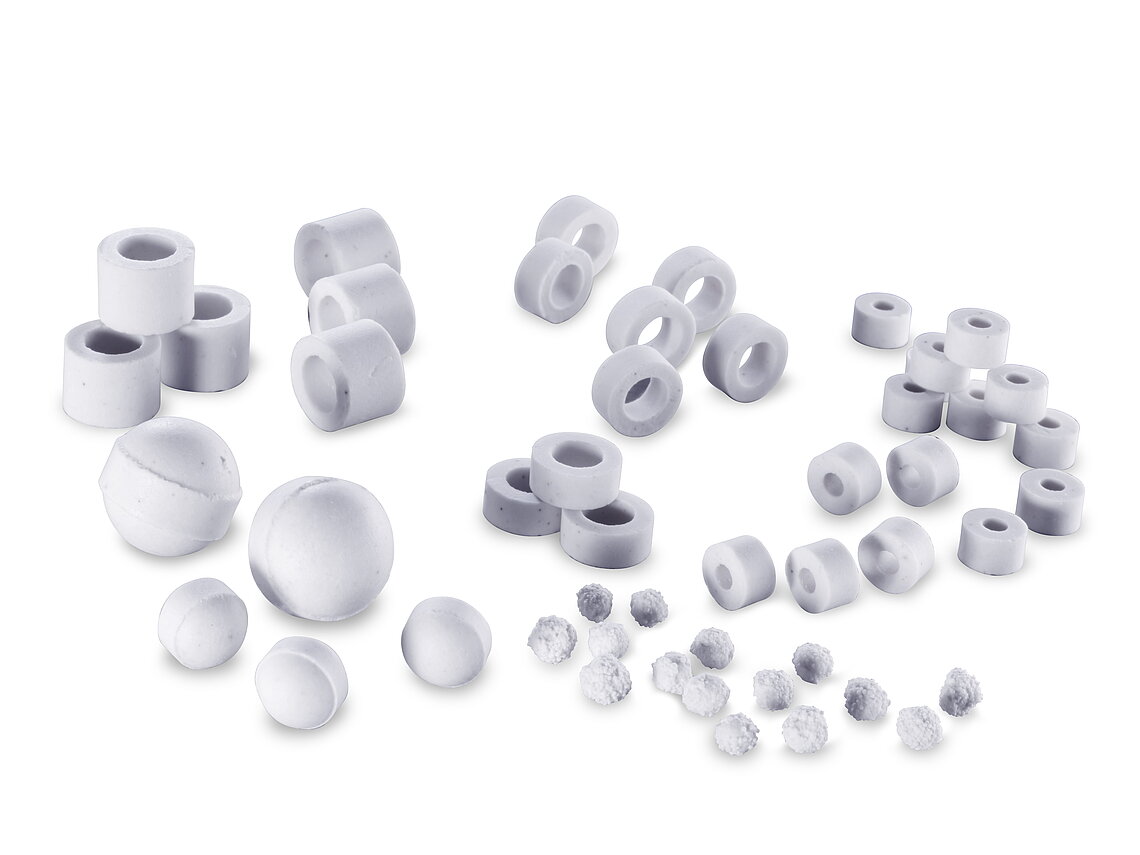Ceramics for catalyst carriers in selective oxidation processes
From baby nappies to PET bottles – a large proportion of everyday items require chemical products. Over 80 % of these are produced with the help of catalytic processes. As a component in modern catalysts, ceramic catalyst carriers from CeramTec play a key role. In combination with the active catalytic substance, they determine the performance of the catalyst and influence the economic efficiency of catalysis.
Catalysts ensure that the necessary activation energy of chemical reactions is lowered while the forward and reverse rates of the reaction are accelerated. Precious metals such as platinum, gold or silver are often used as active catalytic substance. Because of their high cost, these substances are often applied to catalyst carriers in a thin layer for optimal utilisation.
“The active catalytic substance can either be applied as a surface coating on a dense carrier or impregnated in a porous system. Ceramic is ideal as a carrier material because it has all the properties needed for catalysis, including mechanical stability, chemical inertness and, for certain reactions, a low surface area," explains Stephanie Neuberger, Account Manager at CeramTec.
Catalyst carriers need to be produced in very specific shapes, as bulk material catalysts are used in the chemicals industry to convert gaseous or liquid reactants. In large chemical plants, such reactions take place in fixed-bed reactors consisting of tubes that are filled with the respective catalyst.
"Catalysis is an important cost factor for large-scale chemical industry players. Therefore, the ceramic carriers, which we produce for our customers by the tonne in spherical or ring form from steatite or porous alumina, need to be precisely matched to the corresponding reaction to achieve optimal conversion. Typical reactions are, for example, the oxidation of propylene to acrylic acid or of ethene to ethylene oxide," says Stephanie Neuberger. "Such specific adjustments require close cooperation between us as a ceramics manufacturer and chemical companies in order to develop and optimise customised solutions accordingly, for example with regard to their geometries or other specifications."
As a globally operating manufacturer of special technical ceramics solutions, CeramTec operates in the catalyst carrier sector with high-performance plants at its Marktredwitz site in Germany as well as in the USA. For the production of rings and spheres in sizes of 4 to 8 mm and 1 to 4 mm, respectively, the smallness of the parts determines the manufacturing technology, which is designed for high quantities. Production is increasingly automated, not least because of the required volumes. This includes the use of robotic handling systems to simplify time-consuming production steps that traditionally had to be carried out manually.
